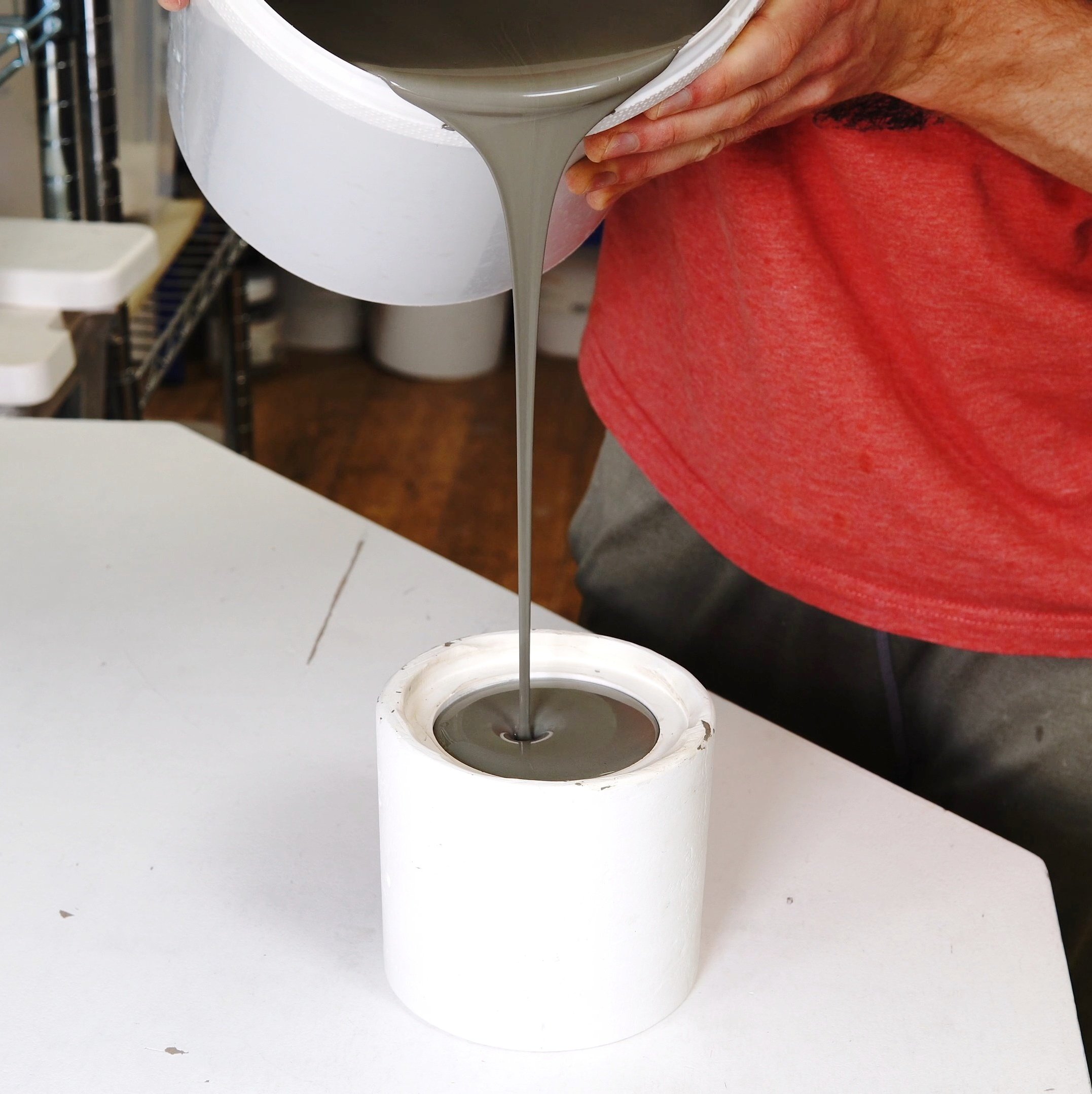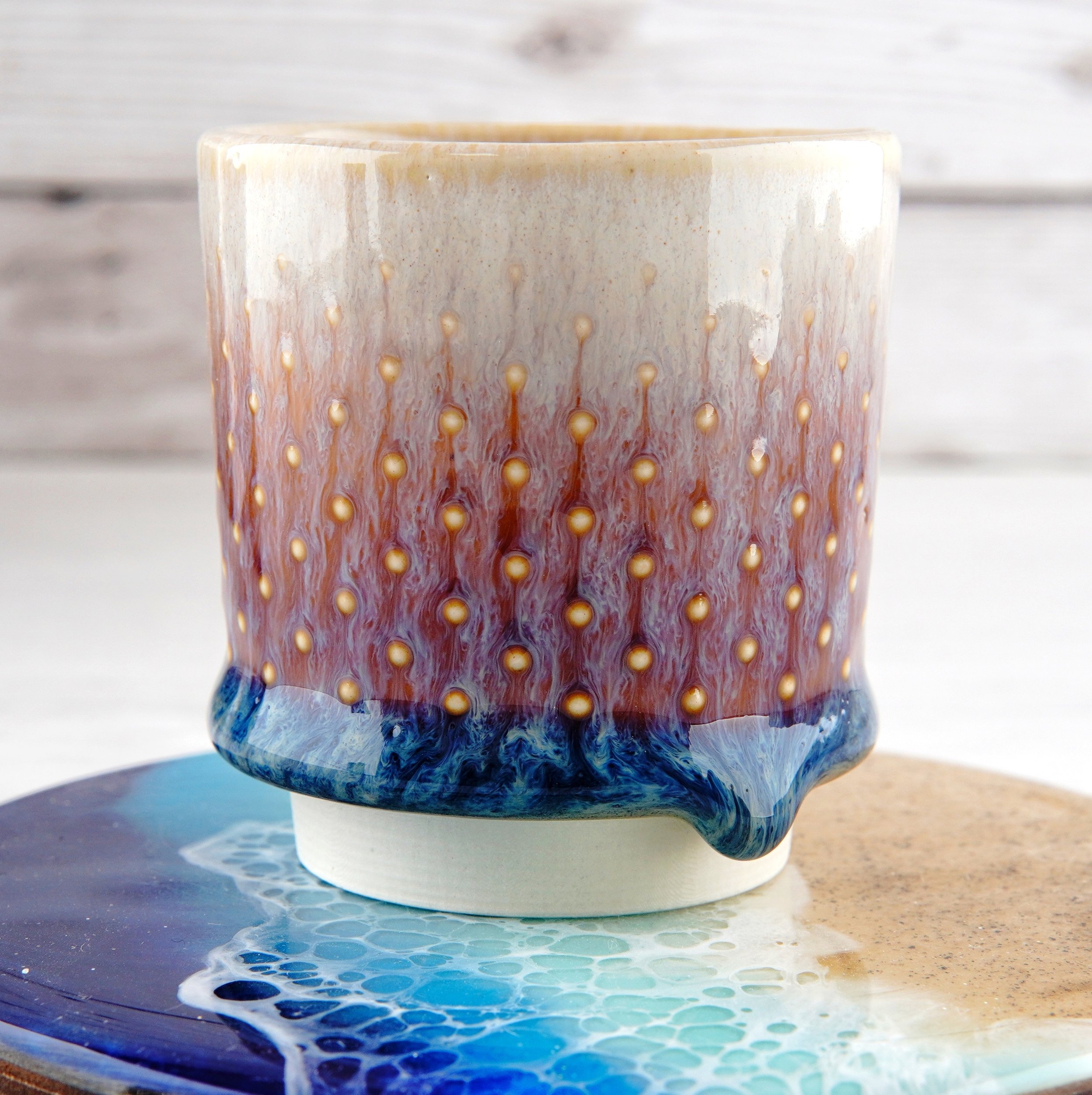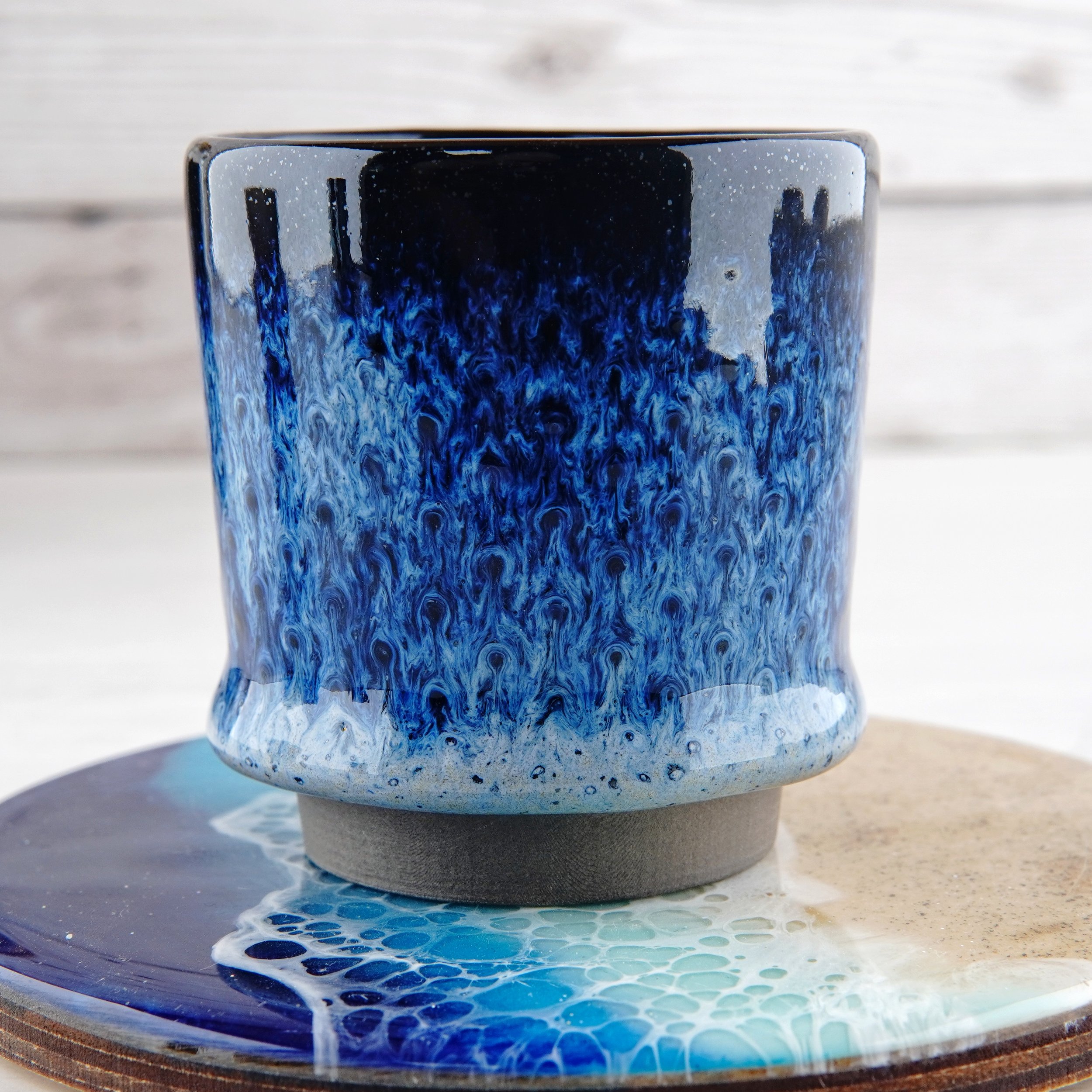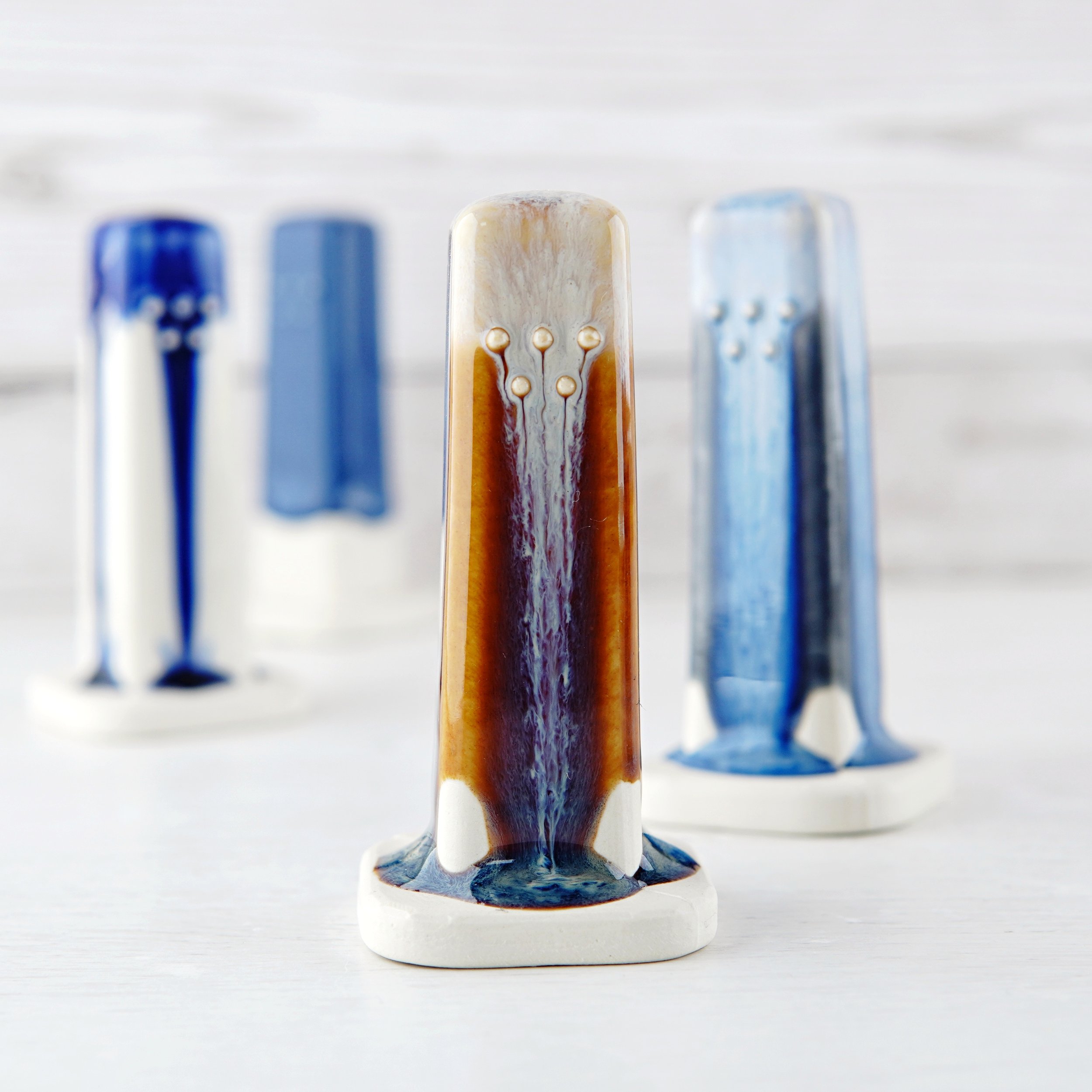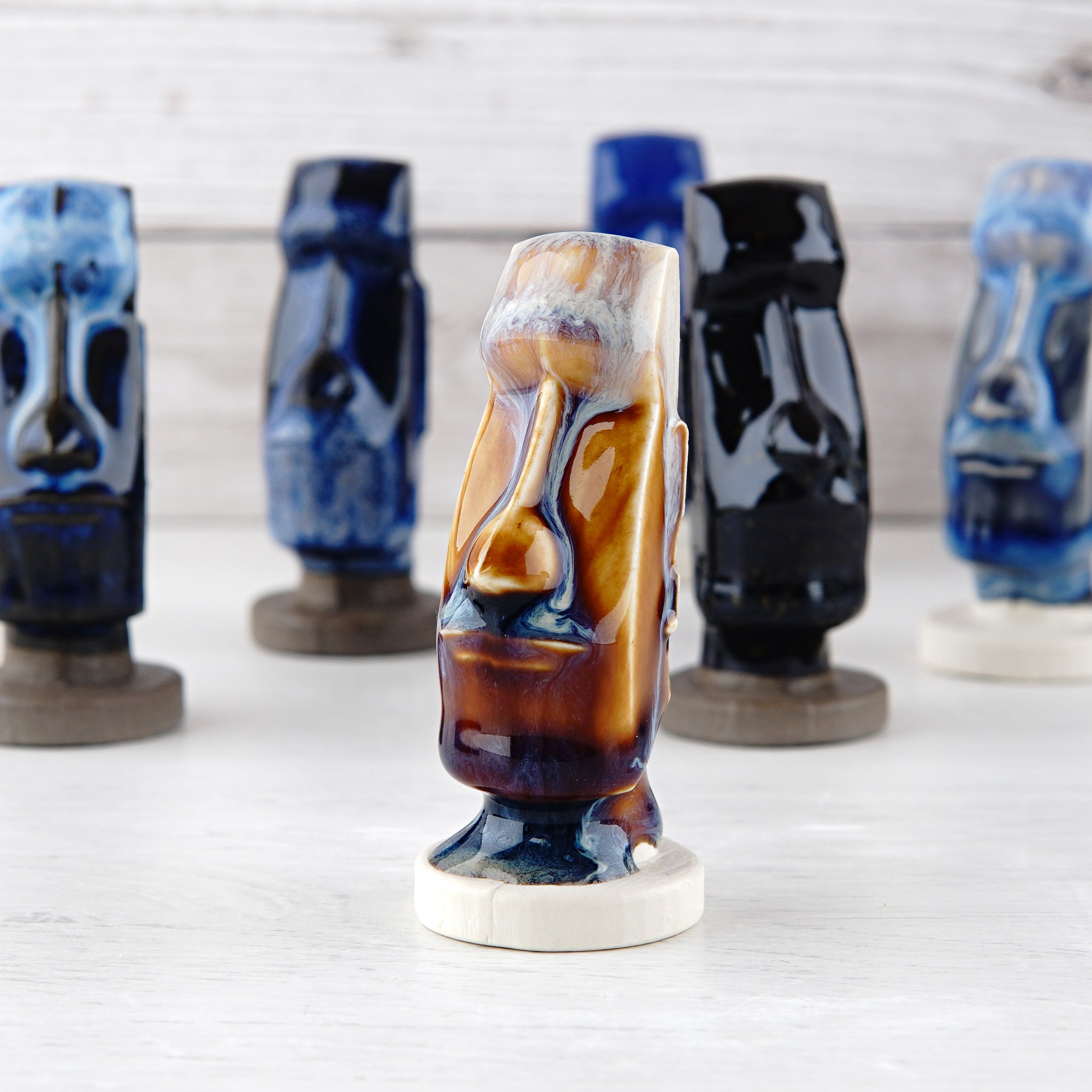Is a Slipcast piece 'Handmade'?
I’ve been doing more slipcasting recently. It’s something I dabbled with in the very early days of Old Forge Creations, but quickly dropped when I realised how much harder it was than it looked.
I feel like I can still understand both sides of the arguments that you’ll frequently see in response to professional artisan slipcasters. I’ll preface this by saying I don’t believe any of these arguments are made by people who have actually tried slipcasting, but the basic themes are that it appears to be easy, unskilled, commercial and/or soulless. This is contrasted to pieces created through a process like throwing, which are seen as skilled and handmade.
I can totally understand that. If you’ve watched a tightly edited video of a pro slipcaster like Curt Hammerly pour slip into and out of a mould, then remove a flawless piece of pottery seconds later, you would be totally forgiven for thinking that it looks easy. It does.
I think it’s in large part because the more ‘satisfying’ parts of throwing on the wheel are also the technically skilled part, whereas the skilled part of slipcasting is everything leading up to the satisfying bit. Anyone who can follow basic instructions would probably be able to pour slip into and out of a simple mould without issue, but there’s a lot of work that goes into the creation of the mould and the slip.
Potential Issues
I thought it might be interesting to run through the issues I’ve encountered in just the short time I’ve been attempting to do this, so you can get a sense of just how many interacting variables there are:
Mould design
In order for a mould to cast and release well you have to design it carefully, especially with more complicated shapes. The slip has to be able to get into every nook without trapping air, then it has to be able to get back out when the wall thickness has built up. Narrow necked pieces can create an airlock as the wall thickness narrows the neck further and prevents the flow of air in and slip out of the mould. This has to be accounted for or the piece won’t cast successfully.
Once the excess slip is poured back out, the walls of the piece start to shrink. The mould can have overhangs in certain directions, but if any of them are aligned so the wall can’t shrink without catching, the piece will pull itself apart.
If you’re 3D printing it, you also have to take the limitations of the printer into account when designing the mould/object.
If you’re using a silicone mother mould, there are a range of possible issues when preparing and casting the silicone too, from how you prepare the framework, how you mix the silicone, even down to how and where you pour it into the mould.
Plaster
Plaster isn’t as simple as it seems. Its porosity and durability are dictated by the amount of water, the mixing technique, and mixing time. Changing any one of these will alter the plaster porosity, which will affect how quickly the wall thickness builds up. This is particularly important in multi-part moulds, as a different porosity between the different mould parts will create an uneven cast.
You need to find and commit to a specific method early on, but it’s hard to know what the best one is. Also, the variables you pick will also affect the number of air bubbles in the mix, so there are plenty of tricks to try to limit or mitigate this as any bubbles on the surface of the mould will be visible on the finished piece.
Slip
Casting slip is an incredibly thick liquid clay that is made runnier by adding deflocculant. There’s a fine balance between the variables of dry clay mix, water, and deflocculant. Any change in these will affect the behaviour of the slip in a variety of ways, and can lead to unsuccessful casts for a variety of reasons. There are also infinite possible variations for the recipe used for the dry mix. There is also no single correct slip, as the density and viscosity requirements will change with mould design and plaster porosity, and the firing/working characteristics will vary between artists.
Casting
Sometimes it’s as simple as pouring the slip in, waiting the correct time, and pouring the slip back out. More complicated moulds can have very precise requirements for how the slip is poured in and out to prevent airlocks. The position the mould is put into after the majority of the slip is poured out is important too, as the remaining slip will take a while to solidify. This can lead to visible drips and bumps on the inside of the piece if done incorrectly.
Demoulding and Cleaning
These stages are fairly straightforward, but there will be some intricacies and potential errors here too. A complex multi-part mould might need to be dissembled in a very specific way to remove the plaster without damaging the soft clay, and the timing can be important.
After this, the seams need to be trimmed and the rim needs to be smoothed. The better the previous stages were done, the less work there will be here.
OK - it’s Difficult, but is it Skilled?
There a sense in which, once you figure out the exact way to do it with your designs and materials, the actual process can be reduced to a very specific set of instructions. Depending on which definition you’re using, that might count as skilled, or you might consider the dexterity of the movement to be a part of the skill. There is, from my experience at least, less dexterous mechanical skill required than with other making processes. This would meant the physical barrier to entry is lower, and the skill required is lower in that regard.
But the knowledge required to balance the various conflicting processes and produce a usable result is far higher than with something like throwing on the wheel. Throwing is simple to explain but difficult to do well, casting is complicated but easier to do.
One thing that people do seem to have an issue with when looking at slipcasting is that there are processes that anyone could do with a little training. So going through the list above, here are the ones that would need to be done by someone skilled: Mould Design, Plaster Mixing, Mould Casting, Slip Production. The ones after that (Slip Casting, Demoulding, Cleaning Seams) can be handed off to someone else without the knowledge of the earlier steps.
It’s worth noting that both casting and throwing can be mass production processes. The delineation seems more obvious with casting, but in a production pottery you often get the same sort of specialisation. There would be one person preparing the clay, one person throwing it, and a different person trimming. It’s a function of efficiency of scale rather than a unique part of casting.
OK - It’s Skilled, but is it Handmade?
I haven’t seen any particularly nuanced or specific definitions for ‘Handmade’, they generally just settle for something along the lines of ‘made with hands instead of with machines’. I’m not sure that will convince anyone who thinks slipcasting is not a handmade process.
Part of the inspiration for writing this was a very brief power cut I had at the studio on a day I was doing both thrown work and cast work. I realised that I could do almost every stage of the casting without power, and almost none of the wheel based work. The cast work relies far less on electricity than the thrown work (as I have an electric wheel).
So a quick run through of each process and how ‘handmade’ it is:
Preparing the model - for me, this is designed in Blender and 3D printed, so not handmade at all. For other makers this could be sculpted, therefore entirely handmade.
Preparing the mother mould - I use a few power tools to prepare the wooden box, then mix and pour the silicone by hand. It’s a hands on and moderately skilled task.
Preparing the plaster - I use a cordless drill, but otherwise no machines needed for this stage. A basic process, but the exact manner it is done is important.
Casting the plaster - All done by hand, no tools needed. A degree of skill is required to avoid air bubbles.
Preparing the slip - A powerful mixer is required here. Ingredients are measured by hand, and the adjustments are made as necessary, so there’s a high level of knowledge required to consistently make a good casting slip.
Pouring the slip - Done by hand. The skill required depends on the mould complexity.
Demoulding and cleaning - All done by hand. The amount of work and the skill required to do it well are determined by the mould design and complexity.
So, is a Slipcast piece ‘Handmade’?
It depends.
If you’re talking about a factory mass producing work - there’s a huge amount of skill required to establish and maintain the process, but that doesn’t mean a single piece would meet your personal criteria for handmade. It would certainly have had skilled maker’s hands involved, but you might not feel that’s enough.
When buying a slipcast piece from a small-batch slipcasting maker? That absolutely meets my definition of handmade. The whole process is hands-on, and there’s a huge amount of skill required to do every stage of it. If a slipcaster can produce pieces consistently, that’s not a demonstration of the simplicity of the process, that’s a demonstration of the understanding they have of the complexity of it. Any piece you buy from them will have been worked on by hand.
If you want an absolute answer then yes, a slipcast piece is handmade.
If you’re comfortable with more nuance, then slipcast pieces can be anywhere from barely to fairly handmade. It’s not the process with the most hands-on time per piece, but it still requires a lot of skilled interaction. It’s not anywhere near as quick and easy as it looks!
If you like this sort of content and want to support the creation of more, I now have a Patreon specifically for it or a page on my website if you just want to make a single donation.


